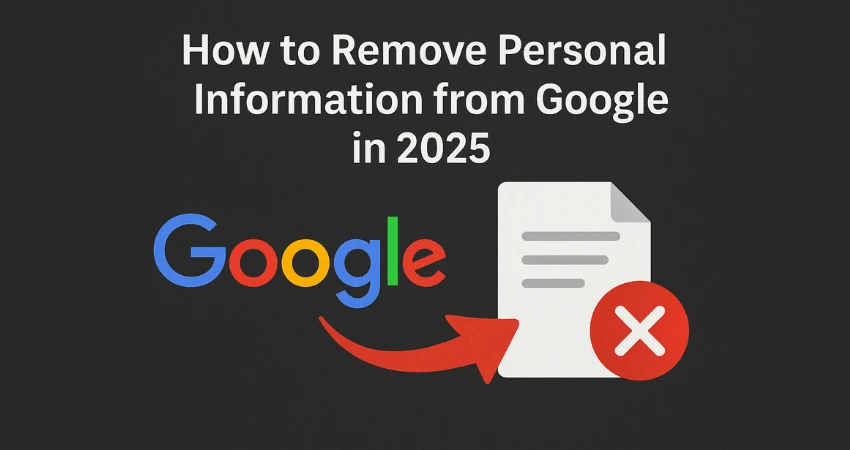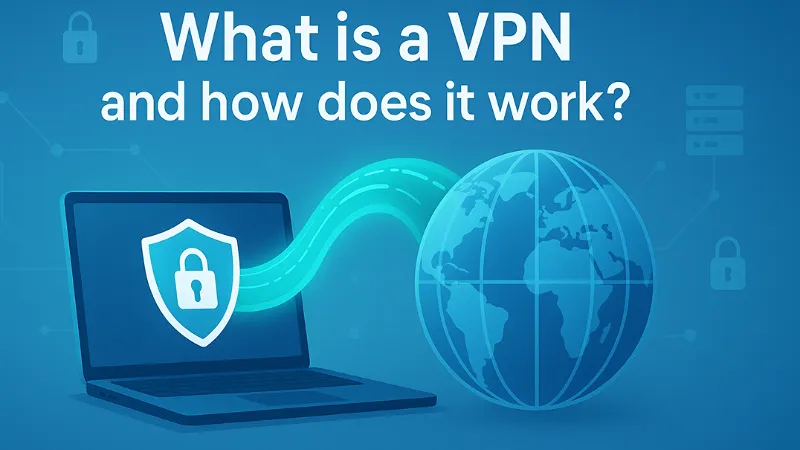The internet has become both a powerful resource and a serious privacy risk. Search engines like Google index billions of web pages, and among them, pieces of your personal information may be scattered. While this improves accessibility, it also exposes individuals to identity theft, scams, cyberattacks, and harassment. That’s why, in 2025, knowing how to remove personal information from Google is not just a choice—it is a necessity.
Google has recognized these risks and introduced advanced tools for users to control their visibility. However, removing sensitive information is not as straightforward as hitting a delete button. It requires a multi-step process, awareness of Google’s updated privacy policies, and consistent monitoring of your online presence.
Why It’s Important to Delete Your Personal Information from Google
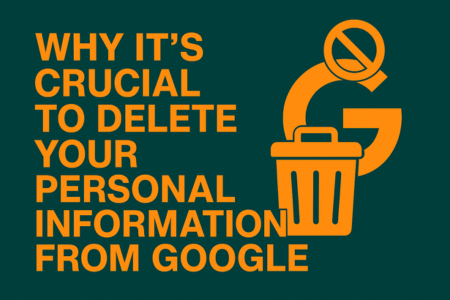
Your digital trail can include your name, phone number, physical address, old social media posts, blog comments, or even images tagged with your location. While some of this is benign, the risks are real and highlight why understanding How to Remove Personal Information from Google is essential in 2025.
Every time you sign up for a new service, make a social media post, or comment on a public website, you create a data footprint. Over time, this footprint expands across hundreds of online sources. Anyone with basic search skills can gather information about where you live, what you do, and how to contact you. This is why learning to Remove Personal Information from Google isn’t just about privacy – it’s about protecting your identity, reputation, and safety.
Here’s why cleaning up your digital presence is more important than ever:
- Identity theft & financial fraud: Cybercriminals can easily piece together your publicly available details, including phone numbers or addresses, to commit identity theft or financial scams. Learning How to Remove Personal Information from Google can prevent such risks before they happen.
- Reputation management: Employers, clients, and even acquaintances often use Google to learn about you. Outdated or embarrassing posts can harm opportunities. Removing personal data ensures that only the right information represents you online.
- Privacy & peace of mind: The more control you have over your search results, the more confidence you’ll have in your personal privacy. When you Remove Personal Information from Google, you reduce spam calls, data broker listings, and potential misuse of your information.
- Legal and regulatory compliance: Some countries have strengthened digital privacy laws in 2025, giving individuals more rights to request data deletion. By using Google’s new privacy tools, you can take advantage of these updates to safeguard your online identity.
Steps to Remove Personal Information from Google in 2025
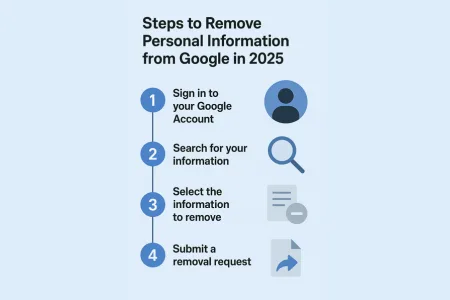
If you’re serious about protecting your privacy and learning How to Remove Personal Information from Google, follow this detailed process. These steps not only help you clean up your search results but also ensure that your sensitive data doesn’t keep reappearing. Whether you’re trying to remove old contact details, outdated images, or private data leaked on the web, this guide breaks it down clearly.
Search for yourself & collect URLs
Start by auditing what’s publicly visible. Type your full name in quotes along with other identifiers like city, old phone number, or email address. This will show you what others can see when they search your name. Make a list of all URLs where your personal information appears. Screenshots can help track your removal progress. This first step is essential when learning How to Remove Personal Information from Google, as you can’t fix what you haven’t identified.
Use Google’s “Results about you” / Removal tool
Google introduced enhanced privacy features in 2025, making it much easier to Remove Personal Information from Google directly from search results. When you find personal data like your phone number or address, click the three‑dots next to the result and choose Remove this result. Alternatively, visit Google’s official Results About You tool. There, you can submit a removal request for search results containing your private details. Fill in the required information—country, type of data (address, ID, etc.), and the URLs. Google reviews your request and sends updates via email. This streamlined approach helps users protect themselves quickly and effectively.
Contact website owners if needed
While Google can remove search results, it can’t delete data from the original source. That’s why reaching out to the website administrator is a critical step when you Remove Personal Information from Google. Politely request removal or editing of the page containing your data. Many websites comply with such requests, especially if the information is outdated or sensitive. Once the site updates the page, ask Google to re‑index it using the Outdated Content Removal Tool for faster results.
Use browser & account‑level privacy settings
Even after removing sensitive info from search results, you can strengthen your privacy through your Google Account. Visit your Privacy & Personalization dashboard and adjust visibility settings, ad personalization, and search history controls. Limiting data sharing across Google’s ecosystem ensures your personal information doesn’t repopulate in future searches. Additionally, update your social media privacy settings to restrict public visibility of your details.
Monitor & follow up
After submitting removal requests, monitor your progress through Google’s Results about you dashboard. This feature automatically alerts you when new instances of your personal data appear online. Schedule monthly checks of your search results—especially if you have a public profile or business presence. Staying proactive is key when learning How to Remove Personal Information from Google effectively.
Consider professional removal services
For individuals with a large digital footprint, professional removal or “data broker opt‑out” services may be worth the investment. These services continuously scan and help you Remove Personal Information from Google and other search engines, submitting removal requests to data brokers, directories, and public record sites on your behalf. They save time and ensure thorough coverage.
By following these detailed steps, you’ll have a clear roadmap to Remove Personal Information from Google and reduce the risk of identity theft, scams, or unwanted exposure. Remember, online privacy is ongoing—revisit your search results periodically and take advantage of new Google privacy tools to maintain control over your personal data.
What Information Can Be Removed from Google in 2025?
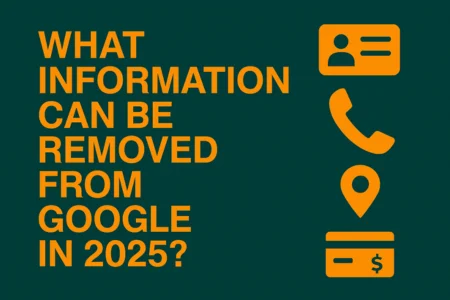
In 2025, Google expanded its data removal policies to protect users. Here’s what you can request to remove:
Personally Identifiable Information
- Phone numbers
- Email addresses
- Home addresses
Sensitive Financial Data
- Bank account details
- Credit card information
- Tax IDs
Government and Official IDs
- Social Security Numbers
- Passports
- Driver’s licenses
Harassment and Doxxing Content
- Content designed to reveal your location
- Threatening or harassing personal details
Explicit and AI-Generated Content
- Non-consensual images
- Deepfake pornography
- Misused AI-generated identities
Google’s broader policies in 2025 make it easier than ever to remove harmful data.
Challenges in Removing Personal Information from Google
While tools have improved, removing data is not always easy.
Not All Requests Are Accepted
Google only removes content that fits its policies. Old news articles or public record data may remain.
Original Sources Still Hold Data
Even if removed from Google search, the website itself may still display your data.
Data Reappearing Over Time
Information is constantly harvested by data brokers, turning privacy protection into a never-ending task.
Lengthy Process
Removal requests may take weeks or months, requiring follow-ups.
Recognizing these challenges enables you to develop a realistic and actionable plan for safeguarding your personal information.
Legal Frameworks Protecting Privacy in 2025
With increasing digital risks, governments have introduced stronger laws.
GDPR – Europe
The General Data Protection Regulation allows individuals to request erasure of personal data under the “right to be forgotten.”
CCPA – California
The California Consumer Privacy Act empowers residents of California to opt out of the collection and sale of their personal information.
DPDP Act – India
India’s Digital Personal Data Protection Act (2023) enhances user rights against unauthorized data use.
Global Trends
Countries worldwide are adopting stricter data protection laws, forcing Google and websites to respect privacy rights.
Tips to Prevent Future Exposure of Personal Information

Once your data is cleaned, you must prevent it from reappearing.
Regular Monitoring
- Search your name on Google monthly.
- Use Google Alerts to detect new mentions.
Control Social Media Visibility
- Limit profile visibility.
- Avoid sharing contact details publicly.
Use Encrypted Services
- Choose encrypted email providers.
- Use secure messaging apps.
Invest in Security Tools
- Use a VPN for online browsing.
- Enable two-factor authentication everywhere.
Being proactive helps you stay ahead of future risks.
The Future of Privacy and Google’s Role
Looking beyond 2025, privacy will continue to be a global priority.
AI-Powered Privacy Protection
Google is developing AI-driven tools to automatically flag and remove sensitive data.
Transparency in Data Collection
Users will gain greater visibility into how their data is used.
Cross-Border Legal Compliance
Stronger international privacy frameworks will standardize rights across regions.
Personalized Privacy Dashboards
Future updates will give users full control over what appears in Google search.
The landscape of privacy is shifting, but staying informed ensures your data remains safe.
Managing your digital footprint is more than a one-time task – it’s an evolving responsibility in today’s connected world. As technology advances, more of your data can surface online through social media, public directories, and third-party platforms. Understanding How to Remove Personal Information from Google gives you the power to take back control of what’s visible about you.
The process of Remove Personal Information from Google is not just about hiding data; it’s about taking proactive steps to protect your privacy and reputation. Regularly searching your name, auditing your accounts, and using Google’s updated privacy tools will help you maintain a safer online identity. By following the removal and monitoring practices outlined in this guide, you reduce the risk of identity theft, doxxing, and unwanted exposure.

